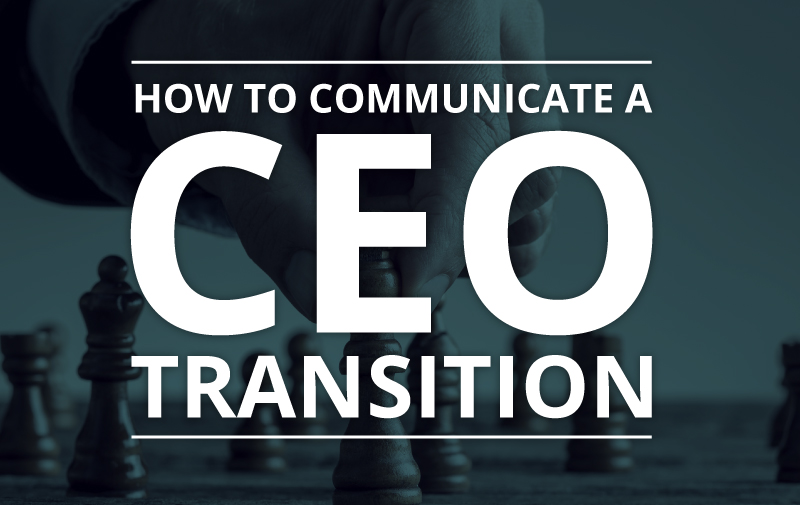Nearly every company, no matter the size, will eventually face a CEO transition. In fact, according to a study by Challenger, Gray & Christmas, the oldest executive outplacement firm in the US,CEO turnovers in 2018 occurred at the highest rate since the Great Recession, with 1,452 CEO departures, up 25.2% year over year.
From an IR perspective, the transition of a CEO is arguably the most high-profile corporate event a company will face (aside perhaps from transformational M&A announcements), as it will likely impact every corporate objective and initiative, and ultimately the overall success of the business. According to an analysis published by McKinsey & Company, nine of ten teams whose leader transitions successfully will meet their three-year performance goals, and 69% of new CEOs will realign their management teams within 2 years.
CEOs also serve as the face of their company to the investment community, spending a large portion of their time building relationships with critical stakeholders on the Street. This is why transitions can heavily impact trading volume and stock price, and why developing a strong message around the transition (and communicating it proactively) is critical.
The transition announcement is guaranteed to drive Street focus to the stock and prompt a number of questions: What prompted the transition? Was it related to the performance of the business? Was it a personal decision or a board decision? Has a replacement been appointed? If not, who will serve in the interim and has the search been initiated? How will the XYZ initiative be impacted (particularly high priority/visibility stock catalysts)? Will the former CEO act as a consultant to remain a resource for their successor? Companies should consider all of these questions and use them to inform messaging around the transition.
It is also important to frame your message for internal and external audiences in a manner that exudes confidence and near-term stability. If a permanent successor has been chosen, focus the announcement on the appointment rather than the departure while speaking directly to why the newly-appointed CEO is qualified to lead and why the board has confidence that he or she will excel. If a successor has not been chosen, it is typically best to remain factual while clarifying who will lead in the interim.
While the circumstances will certainly affect your message, they should not have much impact on the process for communicating it:
- Gather executive management, determine the logistics of the transition, and craft a cohesive external message;
- Create a communication plan and timeline with all key stakeholders, including legal counsel, which outlines both internal and external communications streams;
- Craft an 8K and press release that:
- Meets Reg FD requirements
- Addresses the reason for the transition
- Includes quotes from the successor CEO and potentially a member or chair of the Board of Directors
- Provides a nod to the outgoing CEO for the leadership to date
- Considers expectations for future newsflow (additional transitions, strategic announcements, financial guidance, etc.);
- Hold a town hall event for employees, immediately following the distribution of the press release;
- Proactively engage with key stakeholders on the Street by working with your IR team to schedule calls with top investors, covering analysts, strategic partners, and key investor targets as soon as possible;
- Leverage upcoming earnings calls and/or investor conferences to introduce the new or interim CEO to the Street, publicly provide further context around the transition, if possible, and deliver the new CEO’s first impressions and strategy;
- Engage with the Street aggressively by working with your IR team to outline and manage a robust marketing calendar of non-deal roadshows and investor conferences to build relationships with key stakeholders while shoring up the confidence of existing investors and appealing to new investors.
Other key considerations:
- Avoid “burying” the news; instead, take a proactive approach to street communication. Plan to announce the transition within 2-3 hours of market open/close ,and try to avoid a Friday or weekend announcement.
- Release timing may be impacted by Reg FD requirement, but announcing after-market allows more time to engage with key stakeholders before trading resumes.
- Most investors understand it will take time for a new CEO to ramp up and develop a vision and strategy, but most expect to hear their impressions and go-forward strategy within one quarter following the transition. Remain proactive in communicating with the Street following the transition, and spend the time necessary to build relationships with top investors and covering analysts from day one .
- Keep in mind that covering analysts will likely field a number of calls from their clients on the news. Work closely with them to ensure that they understand your message to help it propagate within the investment community.
In conclusion, while a CEO transition is one of the most transformational events a company will face and should be communicated carefully, a thoughtful messaging strategy and communication plan will always help protect shareholder value and assist a new CEO to put his or her best foot forward in building credibility with the Street. Proactivity, confidence, and a heavily engaged and closely aligned IR team are key elements of a successful CEO transition.
If your company is anticipating a CEO transition or would like to be prepared for when the time comes, we’d love to help you create positive messaging and establish a proactive communication plan. For more, see this piece from last year or contact us today to schedule a meeting with our IR team.
Brian Johnston, Vice President


Leave a Reply